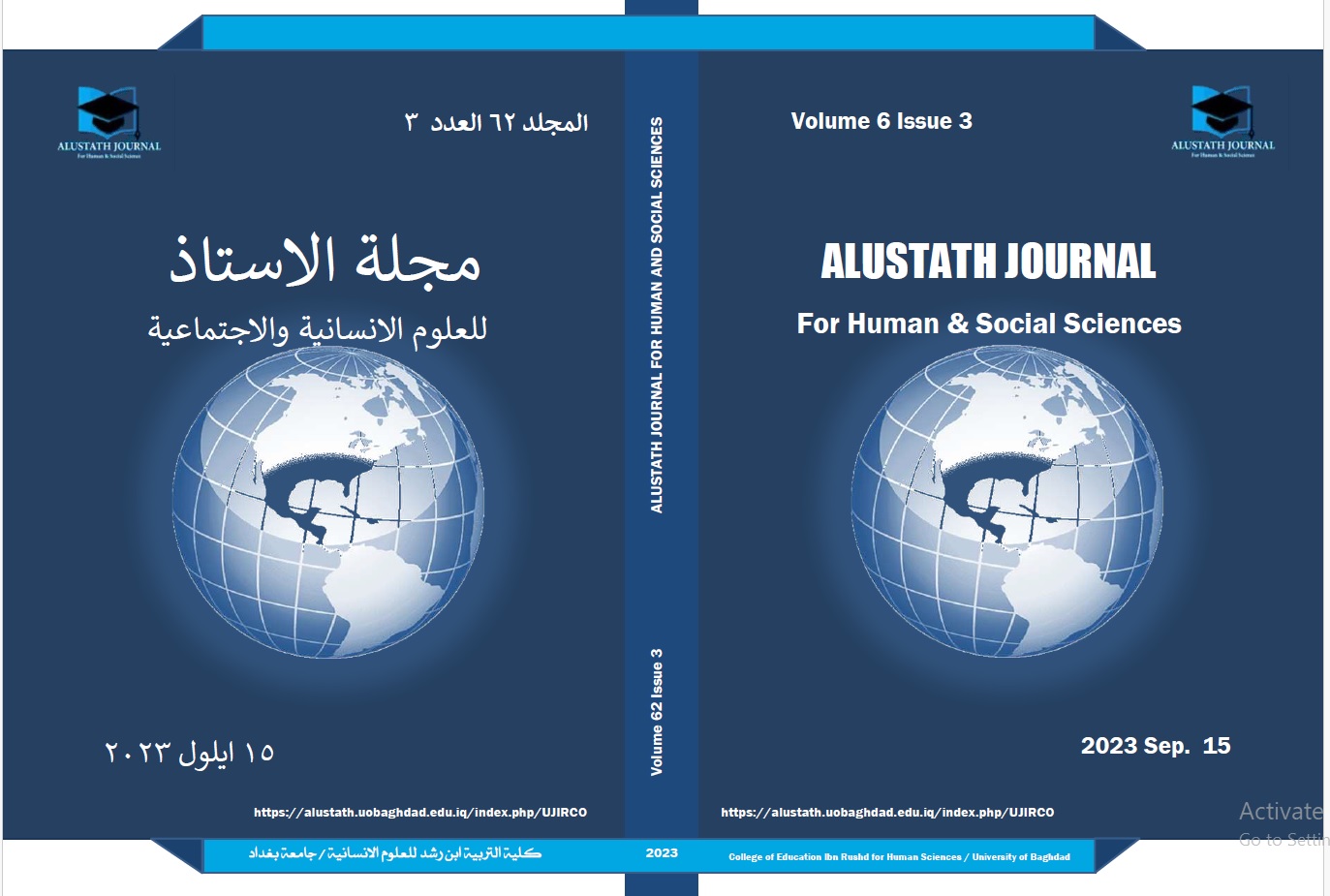Realistic and Absurd Dramatic Setting: A Comparative Study
DOI:
https://doi.org/10.36473/ujhss.v62i3.2168Keywords:
Realistic, Absurd, RealisticDrama, Setting, DramaComparativeAbstract
Dramatic setting in any work of art assumes its significance, especially in drama and all other forms of narrative, telling of the occurrence of an action in relation to themes and characters. The importance of setting lies in the fact that it is always to accompany actions: no setting means no action. Setting is the sole dramatic ingredient among all others which cannot be overlooked by any dramatist or a story teller. For any action or any event—realistic, absurd and otherwise—there must be representations of a place and time—setting—so that full understanding can be attained by the reader or the listener or the audience when exposed to a dramatic experience. This research paper consists of a study dealing with the realistic and absurd dramatic setting in an attempt to make a comparison between them both. It sheds light on significant examples taken from the dramas pertaining to both genres to highlight the significance of each kind of setting set in the dramas concerned, and at the same time it sheds light on the dramatic resources, implications and connotations which each genre’s setting may make available to the dramatists in question.
Downloads
References
• Ahmed, Aseel Laith. (2021). “Symbols of the costume in the oriental theater Mahabharata” Al-Adab Journal. Vol. 1 No. 137 (2021): Issue (137).
• Ardhenda De. (2014). George Bernard Shaw as a Dramatic Artist: Mastery of Stagecraft, Elaborate stage-directions, Realistic. https://ardhendude.blogspot.com/2013/05/george-bernard-shaw-as-dramatic-artist.html. Accessed on August 5th, 2020.
• Babalola, Titilola (2013). Absurd Realism in Postmodern American Fiction: Wallace, Pynchon, and Tomasula. Downloaded from OPUS, University of Lethbridge Research Repository.
• Binyan, Pi. (2007). Absurdity underneath Realistic Elements in Pinter’s The Dumb Waiter. Canadian Social Science Vol.3 No.4 August 2007.
• Esslin, Martin. 1960. “The Theatre of the Absurd Author(s). In The Tulane Drama Review, Vol. 4, No. 4 (May, 1960), pp. 3-15Published by: The MIT Press Stable URL: http://www.jstor.org/stable/1124873 .Accessed: 20/11/2013 01:44.
• Gross, Pearl. 1971. “The Significance of the Room in the Theatre of the Absurd and its Relationship to the Works of Harold Pinter, Edward Albee, Samuel Beckett, Gean Genet and Gean-Paul Sartre.” Unpublished thesis Submitted to the Council of The Ohio State University. US: Ohio.
• Hamon, Augustan. (1912). The Technique of Bernard Shaw's Plays. Trans. Frank Maurice. London: C. W. Daniel, Lt.
• https://literaryterms.net/setting/ Accessed on August 5th, 2020.
• Network References
• Ousby, Ian. (1996). Cambridge Paper Guide to Literature in English. Cambridge: Cambridge University Press.
• Rajeshwar, T. (2012). Modernism and Postmodernism in English Literature. Jaipur: Ritu Publications.
• Sadreddini, Fariba Sadat. (2014). The Fusion of Absurdity and Reality in Harold Pinter’s The Dumb Waiter. International Journal of English and Literature (IJEL) ISSN (P) 2249-6912; ISSN(E) 2249-8028 Vol. 4, Issue 1, Feb 2014, 79-84 © TJPRC Pvt. Ltd.
• Sakran, Ryadh Mosa. (2015). “Untold Story in the Language of Theatre.” Journal of the College of Education for Women.vol. 26. No. 1.
• Santos, R. et.al. (2020). and David H, Khiem H, Walter C. Realism Movement in Drama. file:///C:/Users/abdul%20sattar/Desktop/ASMAA.5.4.2020.SETTING/2nd%20Realism%20Movement%20in%20Drama.pdf. Accessed on August 5th, 2020.
• Shalghin, Akram. (2014).” Time, Waiting, and Entrapment in Samuel Beckett.” International Journal of Humanities and Social Science Vol. 4, No. 9(1).
• Shaw, George Bernard. (1965). The Complete Prefaces of Bernard Shaw. Ed. Ayot St. Lawrence. London: Paul Hamlyn Ltd.
• Stafford, Tony J. ( 2013). Shaw's Settings: Gardens and Libraries. Florida: University Press of Florida. https://muse.jhu.edu/chapter/987430. Accessed on Sept., 19th, 2020.
• Stafford, Tony J. (2013). Shaw's Settings: Gardens and Libraries. Florida: University Press of Florida.
• Thompson, Julie Lorraine. (1986). Ibsen's Stagecraft: the Symbolic Setting. University of the Pacific, Thesis. https://scholarlycommons.pacific.edu/uop_etds/2119. Accessed on August 5th, 2020












